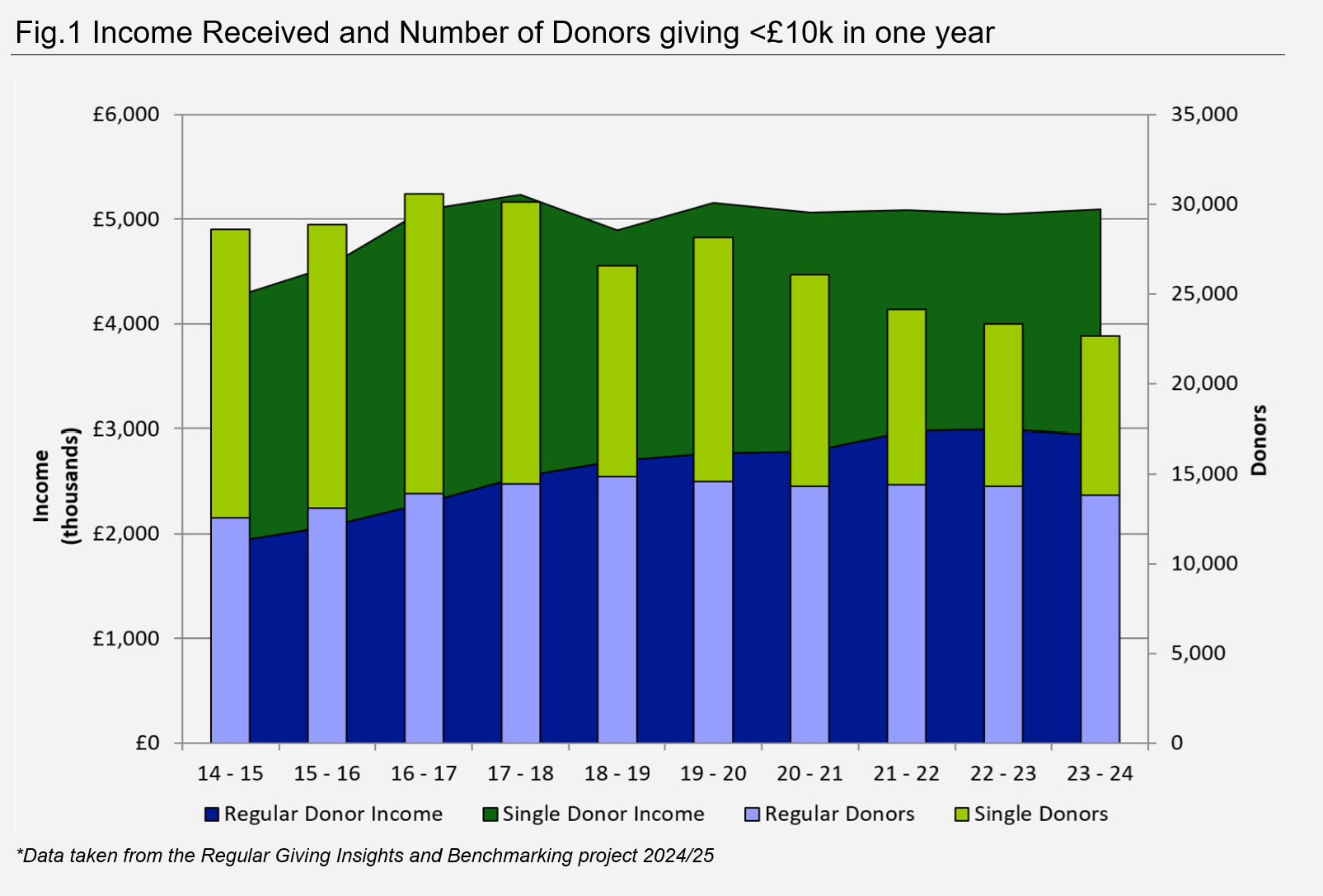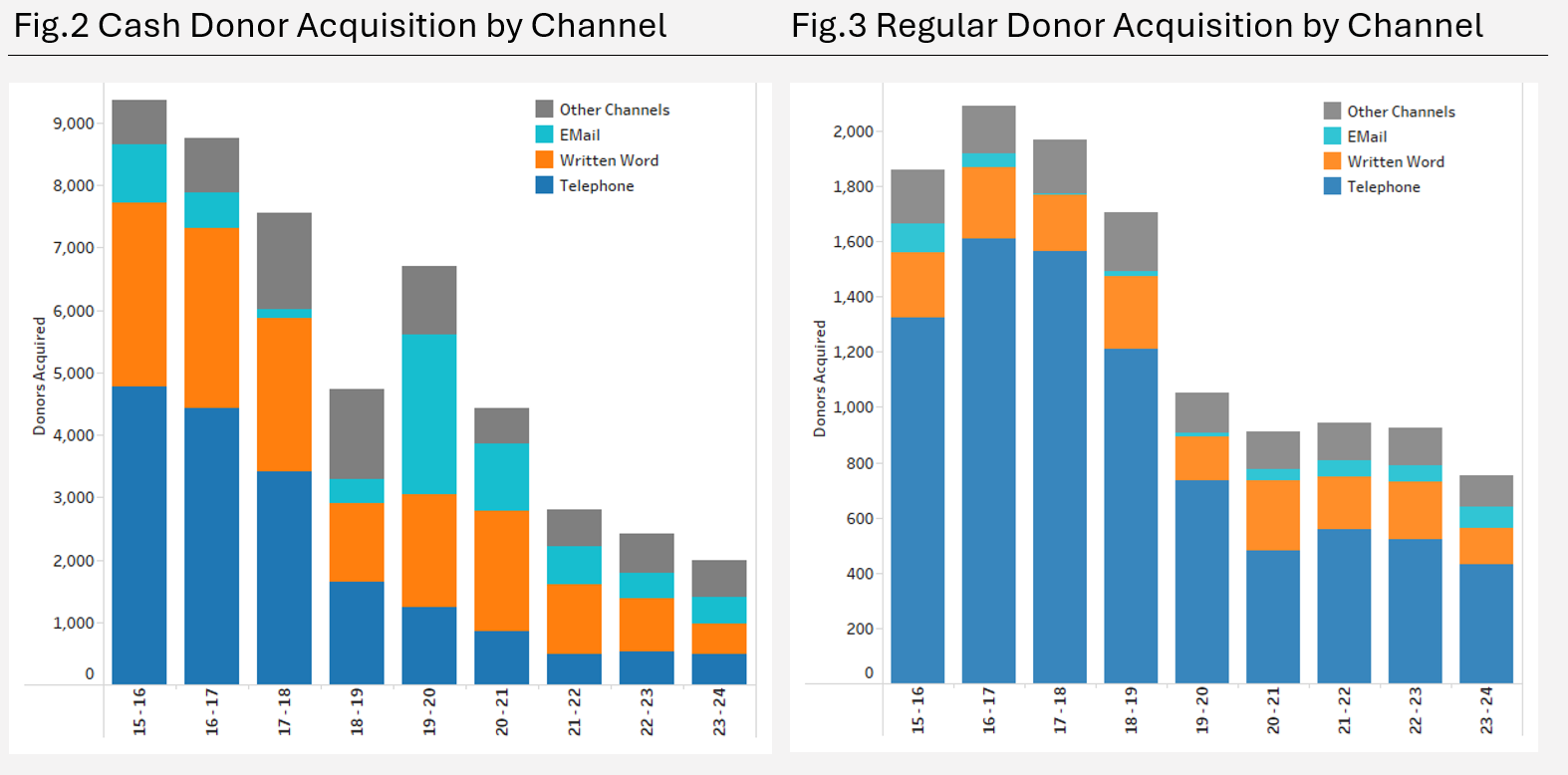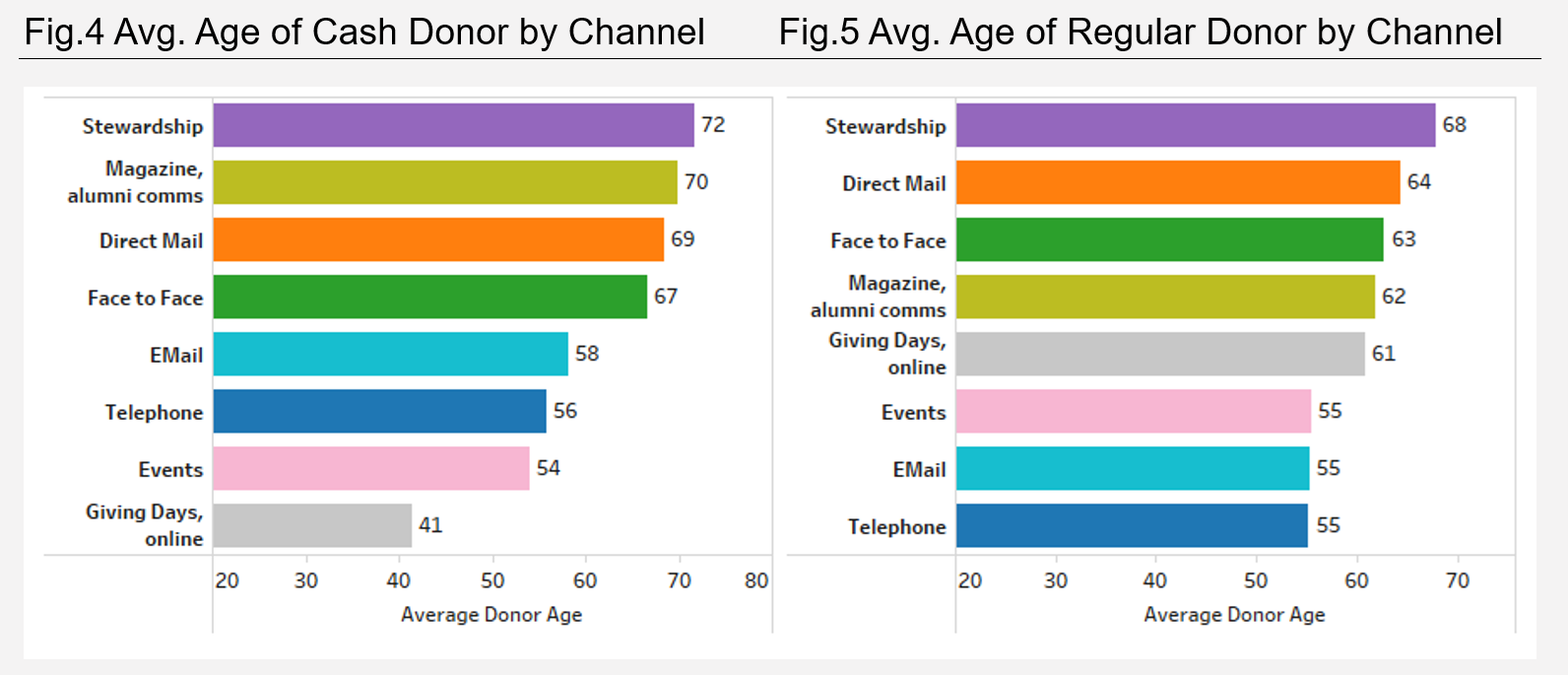
Opinion
What works in regular giving: a decade of insight from HE
by Adrian Beney, Rosie Dale and Thom Hipwood - 25 September 2025

Opinion
What works in regular giving: a decade of insight from HE
by Adrian Beney, Rosie Dale and Thom Hipwood - 25 September 2025
Successful regular giving programmes aren’t just about getting more donors. When run well, they can be a cost-effective source of unrestricted funds; a key driver of long-term donor engagement; a cultivation ground for mid-level donors and future legacies; and a place where major donors are identified or qualified. At the core of these programmes lie two things: people and data.
For over a decade, More Partnership’s award-winning Regular Giving Insight and Benchmarking Project has supported more than 60 universities and colleges across the UK, Ireland and Australia to identify strengths and unlock opportunities in their individual programmes. It remains the only benchmarking initiative analysing like-for-like data across the Higher Education (HE) sector.
Now with 25 years of data on giving up to £10,000 per annum – with data in any one year from 3.5 million alumni and 125,000 donors – we have an unparalleled view of long-term trends in alumni giving in HE.
Regular giving provides a reliable source of sustainable income
While donor numbers continue to fall – a trend seen across the sector – growing generosity and better retention among committed donors has helped keep regular giving income steady over the past seven years, while reducing the cost of fundraising.

Top-performing university programmes are now raising over £5 per addressable alumnus, and average giving per person has increased by 53% to £233 over the last decade.
Successful programmes share common characteristics
From trends to tactics, here are key areas to consider as you plan and prioritise for the year ahead.
1. Clarity of purpose
A clear purpose statement will align your team, sharpen focus, and guide investment. This could be to deliver long-term sustainable income, strengthen the pipeline of mid-value and legacy donors, or to engage your campus community.
At the University of Sheffield, where the purpose is focused on long term retainable income, a temporary staff reduction prompted a tactical decision. “We focused all our effort on retaining income from our existing donors,” said Heather Clement, Head of Individual Giving. “This meant more targeted stewardship communications at our existing supporters, a greater focus on converting them on to regular gifts, and an acceptance that our acquisition programme would be put on hold.”
Despite reduced capacity, the team recorded its most successful year to date for income.
2. Focus on retention
Investment to encourage repeat giving is paying off, with retention rates rising from 63% to 72% over the past four years. This matters because our data show that in the latest year, 92% of income came from donors who have given to the institution before.
Regular giving is also a key entry point for future major donors. On average, 40% of all donors who have given at least one gift of between £10,000 and £100,000 in a year, started their giving with a gift of less than £10k. And a third of all donors who have given £100,000+ made a gift under £10,000 beforehand.
Our analyses across HE institutions show that direct mail remains the strongest lever to increase retention, especially when paired with thoughtful email journeys and stewardship.
At LSE, overall donor retention at giving levels up to £10,000 grew from 52% to 74% in just three years. “The benchmarking really helped in identifying our programme’s weaknesses, and where we were underperforming in comparison to our peers,” said Emma Simpson, Head of Regular Giving. “With a small team, we focused on thanking, storytelling, and segmenting our messages, and made retention a core KPI for target segments. We proactively focused on the 7,500 donors who had given to us in the last 10 years and have seen our retention rates increase.”
3. Smart acquisition strategies
In common with the wider charity sector, acquisition is getting harder and last year fell to the lowest level in a decade. While our analysis shows that an answered call was just as effective in 2023/24 as it had been ten or more years earlier, telephone fundraising across the sector has dropped sharply. In fact, 150,000 fewer completed calls were made across our dataset in 2023/24 compared to 2017/18. This is partly because of reduced investment, but also the challenge of getting people to answer.
We’re now seeing teams using a multi-media approach to pre-call communications to increase the likelihood that an alum will answer, as well as parallel, multi-channel approaches combining digital and print. While email on its own is struggling to get attention, it can be effective when used as part of such a multi-channel approach.

At the University of Leeds, Senior Regular & Leadership Giving Manager, Beth Whitaker led the redesign of their acquisition strategy: “Our cycle now runs over two years across multiple channels, all aligned to a consistent case for support. Once we identify our audience, we focus on email sign-ups, then build engagement through scholar stories and donor impact content, giving prospects multiple chances to connect and give. If they don’t, we rest them, but if they do give, they move seamlessly into our retention journey.”
4. Data-driven decisions
We have found lots of evidence that different communication channels produce responses which vary significantly with age. The chart below shows the average ages of donors responding to a range of channels for a group of universities.

On the face of it, the data suggest that older people respond best to the written word, sent by printed media, as well as to stewardship-specific communications sent by both mail and electronically. But solicitation selections are important here, since if you only send direct mail to older people and only send giving day information to younger people then that will also explain an age disparity. That would be caused by your fundraising behaviour, not the donor’s response.
In fact, we think there are two things which explain the age difference in channel responsiveness. It is widely accepted that older people are more likely to give, and that print media does work well with this group. But what this chart does not show is the extent to which different age groups are contactable in different ways. This is often a major challenge within alumni populations and is easily overlooked since it’s frequently no-one’s responsibility to improve it.
Our data show that on average, half of alumni non-donors over the age of 48 are not digitally reachable. As a result, many older alumni receive little or no supporter engagement contact, since most of it has become digital. And worse, even if the university is still doing direct mail, then the only time they hear from their alma mater is when it wants their money.
In fact, our data show that older alumni with email addresses do appear to be responsive to that form of communication, albeit at a lower level than printed mail. But with ongoing challenges for email open rates and phone contactability declining, cuts to print budgets mean many institutions are unintentionally neglecting one of their most promising donor segments. Short-term savings on print can lead to long-term income loss if not replaced with equally effective engagement strategies. Age-related demographic behaviour and contactability need to be in dialogue with each other when deciding who to solicit and how.
Yet contactability is often viewed as the responsibility of the data team. We think the issue needs to sit at a more senior level. Why not ask “whose job is it to worry about how contactable your alumni database is?” The skillsets and tools to improve contactability will be with Alumni Relations, Communications and Regular Giving leads as well as the Data team, but ultimately someone on the senior management team needs to “own” this question. The most proactive institutions are doing something about this – starting with assigning a clear owner for contactability, prioritising audience segments to focus on first, and developing supporter journey plans which provide alumni with compelling reasons to allow multi-channel contact.
5. Build a pipeline, not just a programme
The most effective regular giving efforts don’t operate in isolation – they’re embedded in a broader cultivation pipeline that connects donors to mid-value and major giving opportunities.
Donors giving £1,000-£10,000 annually across our Benchmarking cohort donated a collective £1.85 million in 2023-24, with giving at this mid-value level making up – on average – almost half of all sub-£10,000 income (from just 10% of the donors). With donor numbers at this giving level on the rise since 2021/22, they’re an important group to focus on.
Imperial College London has seen giving at this mid-value level increase 15% in two years, largely through regular gifts. With 74% retention among £1k-£10k donors – up from 43% in 2019/20 – they now operate one of the highest performing mid-value giving programmes in the sector.
“We invested in understanding our programme,” said Sacha Anthony, Regular Giving and Legacy Giving Manager. “Working with More, we used data from interviews and surveys to gain insight into our audiences and develop tailored messaging for audience segments. We developed a case for support around our Student Assistance Fund and launched our Imperial Ionic mid-value giving club with a bespoke look and feel.”
Our recent, parallel, legacy benchmarking project also shows that on average a lifetime donor is 14 times more likely to be active in the legacy fundraising pipeline than a non-donor. And those who give for many years are much more likely to leave a legacy. So an effective regular giving programme is also a powerful way to spot and steward future legacy donors.
What next?
The data is clear: high-performing regular giving programmes are driven by purpose, insight, and strategic investment. In a sector facing increasing pressure to prove impact, now is the time to invest in understanding your programme, improving data quality, and ensuring regular giving is fully integrated into your donor pipeline.
We’re here to help you do exactly that.
Full Regular Giving Benchmarking data insights are available each year to Regular Giving Insight and Benchmarking Project participants. Find out more about how to join or talk to us about how we can support your programme.